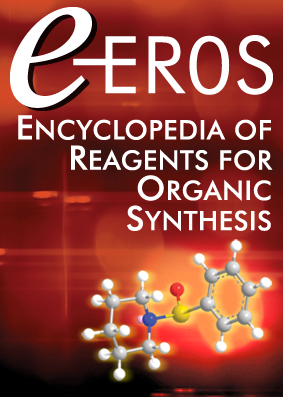Allyl Phenyl Selenide†
Abstract
[14370-82-2] C9H10Se (MW 197.14)
InChI = 1S/C9H10Se/c1-2-8-10-9-6-4-3-5-7-9/h2-7H,1,8H2
InChIKey = HGVAUOKQFBXKDV-UHFFFAOYSA-N
(metalated derivatives are ambident nucleophiles;2,4,6-9,11,15 sigmatropic rearrangements produce allyl alcohols and amines;9-12 cleavage of SeC bond provides a source of allyl anions,13 cations,6,14,15 and radicals16,17)
Alternate Name: (2-propenylseleno)benzene.
Physical Data: bp 65–68 °C/1 mmHg;2 82–83 °C/3 mmHg.3
Solubility: insol water; sol most organic solvents.
Preparative Methods: from Allyl Bromide,2, 4 chloride, or mesylate4 and sodium benzeneselenolate (prepared by reduction of Diphenyl Diselenide,2, 4 or deprotonation of Benzeneselenol).3 Numerous other procedures have been used, including the reaction of allylsilanes with Benzeneselenenyl Chloride,5 allyl acetates with Phenyl Trimethylsilyl Selenide,5 allyl halides with PhSeTl,5 and allylamines with PhSeLi (Ru catalyzed).5
Purification: distillation in vacuo2, 3 or chromatography on silica gel4 before use.
Handling, Storage, and Precautions: the compound is stable indefinitely in the freezer, but will slowly turn yellow at room temperature and in ambient light due to the formation of diphenyl diselenide. The compound is not excessively malodorous when pure, but should be prepared and handled in a fume hood due to the toxic nature of many organoselenium compounds.



